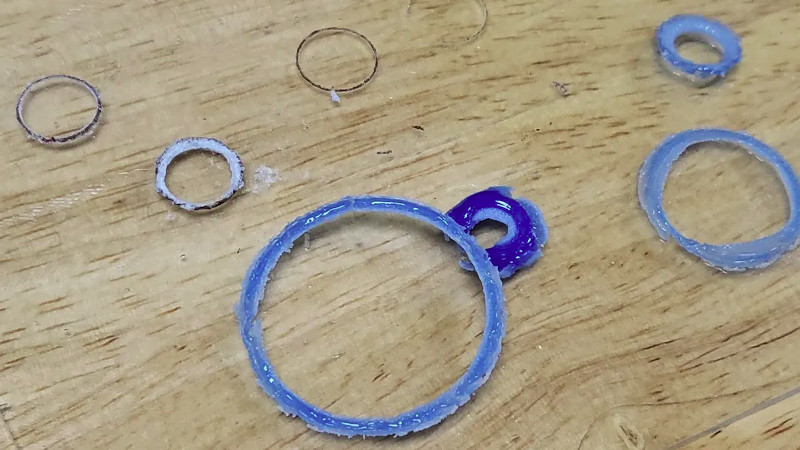We’re all familiar with FDM 3D printing, and some of the more well-heeled or adventurous among us may even have taken a faltering step into the world of SLA printers. But for most of us there’s a step further in 3D printing that remains beyond our reach. SLS, or Selective Laser Sintering, creates prints from powder by melting it layer by layer using a laser, and has the advantage of opening up more useful materials than the polymer stock of the other methods. It’s not entirely unreachable though, as [Kenneth Hawthorn] shows us by using a laser cutter to produce SLS prints from powdered glass.
He evolved the technique of repeated fast passes with the laser to gradually melt more glass together as opposed to slower passes. He achieved a resolution as low as 0.1 mm, though he found a better glass color when the laser was less tightly focused. It raises the concern that glass powder is abrasive and thus a threat to any mechanism, thus he’s being extremely careful with the fan settings.
This may not be quite in the league of an SLS printer costing thousands of dollars, but it’s a technique that bears more investigation and could no doubt be refined for more custom fused glass creations. He tells us he was inspired by a previous Hackaday post about sintering sand, and of course we’d like to remind readers of a 3D printer that did the same job with the power of the sun.
















If there’s a fixed Z-height can this be called 3D printing?
There’s no fixed z height really as for SLS you pass a powder layer over the sintered layer and the height of that layer depends on a bunch of things including powder, or silica diameter uniformity. It’s usually uneven and requires some finishing machining depending on the surface finish you want to achieve.
Looking at the photo of the results, my hand cries out; “Don’t Touch! I don’t want any glass slivers!”
Indeed, looks like a trip in a bead tumbler to polish all those barbs off is in order.
Just a first effort here. They actually are more crumble vs. sharp. Will post again when we refine it again and hope others will try the same.
This is an awesome experiment. I’ve been idly wondering if I could build a wiper mechanism into my c02 laser for a very slow sintering setup. I might even fiddle with that project before commercially available ones are desktop sized and in every home :P
Indeed and I was idly wondering if when I get around to making the cnc motion platform I want to build I’d fit the same sort of concept into it, was definately getting a laser tool of some sort, and I was leaning to gas tube laser, even though its got to be stupidly beefy for a laser as the primary job will definitely be milling.
In that case, beefy is okay. Wimpy isn’t.
But you know that.
Happy to work with you on that!
Not there yet, but could this be a pathway toward 3D printed chemistry glassware? Some of the more complex setups that currently have issues with seals between the individual parts may be good candidates. How robust is this glass when subject to thermal cycling?
We are working with Helios in Austin. Looking for people to help with questions like yours.
I want to try diatomaceous earth mixed with both at different percentages, to see what holds up the best. Also mixing with a bit of flour or sugar and water to make a “cake”. After the water dries a bit the floor/sugar would act as binder (or that is the idea anyway), and minimize the loose abrasive dust (the diatomaceous earth) from munching up the moving mechanisms inside the cutter.
It appears in the video that a Co2 laser is being used. More detail on this project would be great.
You can carve a circle on a gypsum plate and fill it with the glass powder. Than put a microwave kiln on it and microwave it.
Can I use drywall for the gypsum